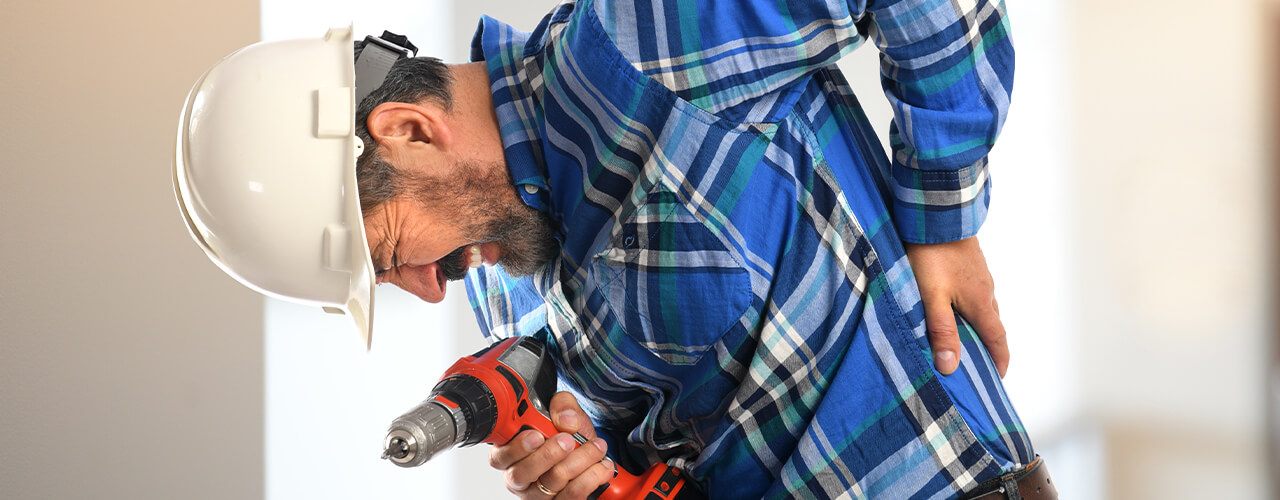What’s Causing Your Back Pain?
Back Pain & Sciatica Relief commonly results from a muscle strain or injury; however, sometimes the back pain you’re experiencing is the result of sciatica.
Sciatica is a common and very specific type of back pain. People who experience sciatica typically report a painful sensation in the lower back, legs, or buttocks, as it is a condition that develops from issues surrounding the nerves.
Whether you’re experiencing general back pain or sciatica, our Vancouver physiotherapy practice can help. Contact Physiomed today at (604) 879-7214 to schedule a consultation with one of our licensed physiotherapists and find the best treatment plan for back pain relief!
Understanding the difference between back pain and sciatica:
Back pain
There are a large number of conditions that can result in back pain. For example, poor posture, car accidents, and sports-related injuries are just a few of the ways that someone may develop back pain.
The pain you experience may either be acute or chronic, depending on what caused your back in the first place. Acute pain means that it lasts for a short time and is usually severe. Chronic pain means that it lasts generally three months or longer and it can either cause dull or severe persistent pain. The pain you experience is typically either rooted in your back muscles or the bones in your spine.
Sciatica
Sciatica, medically referred to as “lumbar radiculopathy,” is a bit different from general back pain. It can be extremely uncomfortable, but the good news is that it is fairly easy to diagnose. Sciatica is caused by a “pinch” or additional damage to the sciatic nerve, which is the largest nerve in the human body. It begins at the lower back, splits at the base of the spine, and extends down the buttocks, legs, and feet. The sensation of sciatica can be described as “stinging,” “burning,” or “shooting” down the lower back, buttocks, legs, or feet.
Why do I have back pain or sciatica?
Injury is the most common cause of back pain. This can happen in one of two ways: 1) an instant, sudden trauma, such as a car accident, or 2) repetitive use that puts excessive stress on the back over time, such as bending down several times throughout the week to pick up boxes. It is also possible for back pain to develop from certain underlying conditions, such as a herniated disc or degenerative disc disease.
Sciatic typically affects people between the ages of 30-50, and it can develop for a number of reasons. Certain conditions can lead to sciatica, such as bone spurs, arthritis, or any injury that affects the sciatic nerve. Injuries can also lead to sciatica, such as herniated discs, harsh falls, sports-related collisions, or anything that occurs gradually over time through overuse, repetition, or general “wear and tear.”
Find back pain relief with Physiomed:
If you have been living with back pain or sciatica, don’t hesitate to contact Physiomed for safe and effective treatment options. Our highly-trained Vancouver physiotherapists will design an individualized treatment plan just for you. In order to provide you with immediate pain relief, you may be prescribed any combination of ice and heat therapies, manual therapy, posture improvement, targeted stretches, and exercises, or any other treatment that our physiotherapist deems fit.
As you improve throughout your treatment program, your exercises and stretches will become more intense over time. This is done in order to improve your strength and range of motion. Those diagnosed with sciatica will also likely be prescribed specific leg stretches, in order to loosen up the sciatic nerve.
At Physiomed, our main goals are to help you relieve your pain, improve your strength, and reach your optimum levels of function. If your back pain or sciatica symptoms have been limiting your daily life, Contact Us Today at Vancouver, BC Center! We will help you reach your physical goals so you can get back to living your daily life, free from back pain or sciatica discomfort.
Visit our Vancouver clinic location today to get started! Make an appointment now!
Read our blog post on how to tell if your sciatica pain requires physiotherapy by clicking here!
FAQs
What are the causes of back pain?
There are a large number of conditions that can result in back pain. For example, poor posture, car accidents, and sports-related injuries are just a few of the ways that someone may develop back pain. Injury is the most common cause of back pain. This can happen in one of two ways: 1) an instant, sudden trauma, such as a car accident, or 2) repetitive use that puts excessive stress on the back over time, such as bending down several times throughout the week to pick up boxes. Some other factors that may contribute to your back pain include degenerative disc disease, lumbar spinal stenosis, fractures, herniated disc, osteoarthritis, osteoporosis, and tumors of the spine.
Why does my back hurt?
Back pain commonly results from a muscle strain or injury; however, it can also develop as a result of an underlying condition, such as a herniated disc, sciatica, or degenerative disc disease. Poor posture, car accidents, and sports-related injuries are also common ways that someone may develop back pain. Your physical therapist will focus on treating the root of your back pain, in order to help you regain mobility, function, and comfort.
How can I get relief from back pain?
You can treat your back pain with physical therapy. Physical therapy can address back pain by helping to improve your range of motion, strengthening the muscles in the affected areas, and using targeted massage to reduce tension. In many situations, working with a physical therapist to improve can significantly reduce the severity of your back pain, and may even help you avoid more invasive procedures, such as surgery.
What are the best exercises for back pain?
It is common that the muscles used to support the lower back may become weakened from inactivity. We’ll prescribe targeted, easy-to-do exercises that we will walk you through, in order to help your back muscles regain their strength. This will help provide greater support to your spine and reduce any inflammation you may be experiencing. While the best exercises for your back pain are relative to your specific conditions, some common ones your physical therapist may have you do include spine stretches, bridges, and pelvic tilts.



